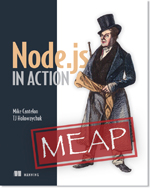Software Testing Articles, Blog Posts, Books, Podcasts and Quotes
This blog post presents the changes to unit testing made in the new version of Visual Studio. The Test View and Test Results windows have been replaced by the Unit Test Explorer, a new user interface that let developers quickly interact with their tests. Third party test frameworks are supported by a new test meta-runner that coordinates and controls the flow of data between the user interface and the underlying test frameworks. Visual Studio will also provide a true native unit testing framework for C/C++. A new test isolation and stubbing framework for managed .NET code called Visual Studio Fakes has been added. A new feature allows also to tests after each successful build. Some Visual Studio 2010 test features have been removed.
Running your SQL Server database unit tests within the scope of a single transaction allows you to roll back any changes that the test enacted after the test ends. This article propose a step by step approach to achieve this goal. You start to create a transaction in your Transact-SQL test script that uses BEGIN TRANSACTION and ROLLBACK TRANSACTION. Then you will create a transaction for a single test method in a test class and then a transaction for all test methods in a given test class.
For Node, there are two types of automated testing: unit testing and acceptance testing. Unit testing tests code logic directly and is applicable to all types of applications. Acceptance testing, however, is an additional layer of testing most commonly used for web applications. This article discusses the Tobi and Soda frameworks for acceptance testing.
This blog post provides a detail process on how to write acceptance tests for the UI using Visual Studio 2010 Microsoft Test Manager and Fit style tables. Fit tables, originally defined for the fitnesse open source software testing tool, allow stakeholders and business analysts to enter expected input and the proper output in a tool they are comfortable wit, like word processor or a spreadsheet.
This tutorial introduces the Selenium WebDriver API. It presents how to mimic usage of the following HTML elements: link , button, checkbox, select combo box, alert box and table. A video explains how to record the Selenium scenario and the code of the examples is stored in github.
This blog post discusses the load testing considered as a science and an art. It provides some interesting hints gathered from experience, such what it defines a golden rule of load testing “By the time the system is mature and stable enough to test, it’s time to deliver already”. It discusses also the fact that load tests are static, but the reality is not. Finally, how close you try to be to reality when you perform load testing, you will certainly not be able to replicate it completely.
SpecsFor.Mvc is a software testing tool that enables to create automated acceptance tests using a browser like Internet Explorer or Firefox. This means that your application is tested from the UI all the way down to the database. Unlike other tools which rely on recording actions, you write strongly-typed tests against your ASP.NET MVC controllers, action methods and view models. SpecsFor.Mvc takes care of translating your tests to the browser. Matt Honeycutt blog post provides a detailed introduction to SpecsFor.Mvc. It discusses the challenges of automated acceptance tests and how to install, configure and start using SpecsFor.Mvc with a simple example.




